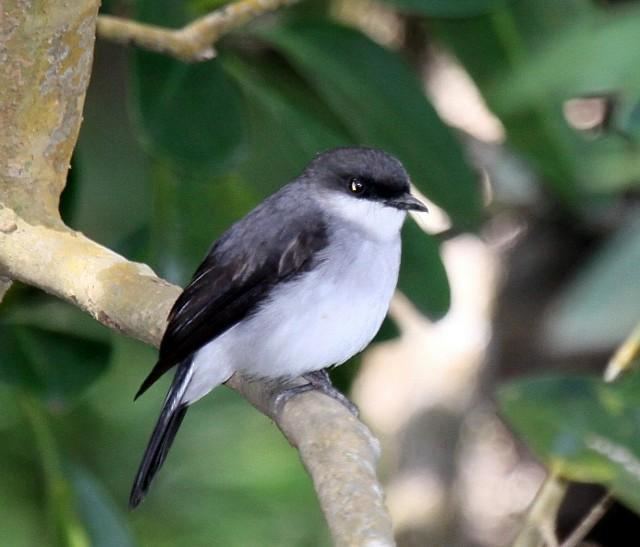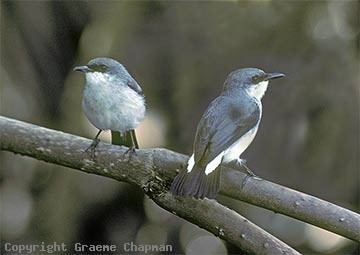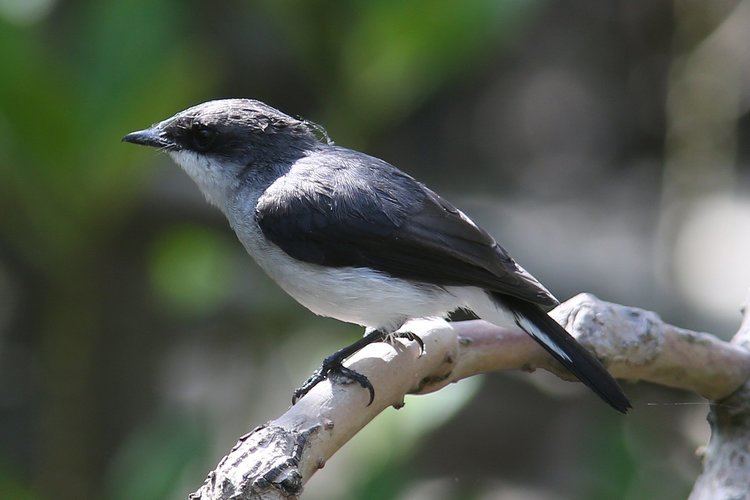Order Passeriformes Scientific name Peneoenanthe pulverulenta Rank Species | Phylum Chordata Family Petroicidae Higher classification Peneoenanthe | |
Genus PeneoenantheMathews, 1920 Similar Lemon‑bellied flyrobin, Yellow‑legged flyrobin, Ashy robin, Torrent flyrobin, White‑faced robin | ||
Mangrove robin peneoenanthe pulverulenta hd video clip 1 1tim siggs
The mangrove robin (Peneoenanthe pulverulenta) is a species of bird in the family Petroicidae. It is found in the Aru Islands, New Guinea and northern Australia. The bird's common name refers to its natural habitat. They live in mangrove forests and seldom fly outside of these biomes.
Contents
- Mangrove robin peneoenanthe pulverulenta hd video clip 1 1tim siggs
- Mangrove robin peneoenanthe pulverulenta leucura
- Taxonomy
- Description
- Distribution and habitat
- Behaviour
- References

Mangrove robin peneoenanthe pulverulenta leucura
Taxonomy

The mangrove robin belongs to the order Passeriformes and the family Petroicidae. The species consists of four recognized subspecies.

The subspecies pulverulenta was described by Charles Lucien Bonaparte in 1850 and is found in New Guinea. Subspecies leucura was described by John Gould in 1869, subspecies alligator was described by Gregory Mathews in 1912, and subspecies cinereiceps was described by Ernst Hartert in 1905 – all three of these subspecies are found in Northern Australia.
Description

The mangrove robin has an average weight of 21.3 grams (0.75 oz) for males and 17.3 grams (0.61 oz) for females. Their wingspan differs between subspecies – the leucura subspecies have spans of 86 millimetres (3.4 in) to 90 millimetres (3.5 in) for males and 77 millimetres (3.0 in) to 84 millimetres (3.3 in) for females, while the alligator subspecies have spans of 82 millimetres (3.2 in) to 87 millimetres (3.4 in) for males and 76 millimetres (3.0 in) to 80 millimetres (3.1 in) for females. For cinereiceps, male birds have wingspans of 80 millimetres (3.1 in) to 84 millimetres (3.3 in) long; on the other hand, female wingspans are 76 millimetres (3.0 in) to 78 millimetres (3.1 in) long. They feature a "dull pale bar" at the bottom of their remiges, although this is not very noticeable. In order to facilitate their navigation through thick mangrove forests, mangrove robins have developed wings and tails that are rounded.
Distribution and habitat

The bird is found in the Northern Australia region and the island of New Guinea, within the countries of Australia, Indonesia, and Papua New Guinea. Their preferred habitat are tropical and subtropical mangrove forests located above the level of high tide. They seldom travel outside of their habitat.
The mangrove robin has been placed on the least Concern category of the IUCN Red List, as the population has remained stable throughout the last ten years. The size of its distribution range is over 426,000 square kilometres (164,000 sq mi).
Behaviour
The call of the mangrove robin has been described as a "down-slurred whistle". It eats insects in the mud when the tide falls. While these may be its primary prey, the mangrove robin also consumes a significant amount of crab in its diet.
